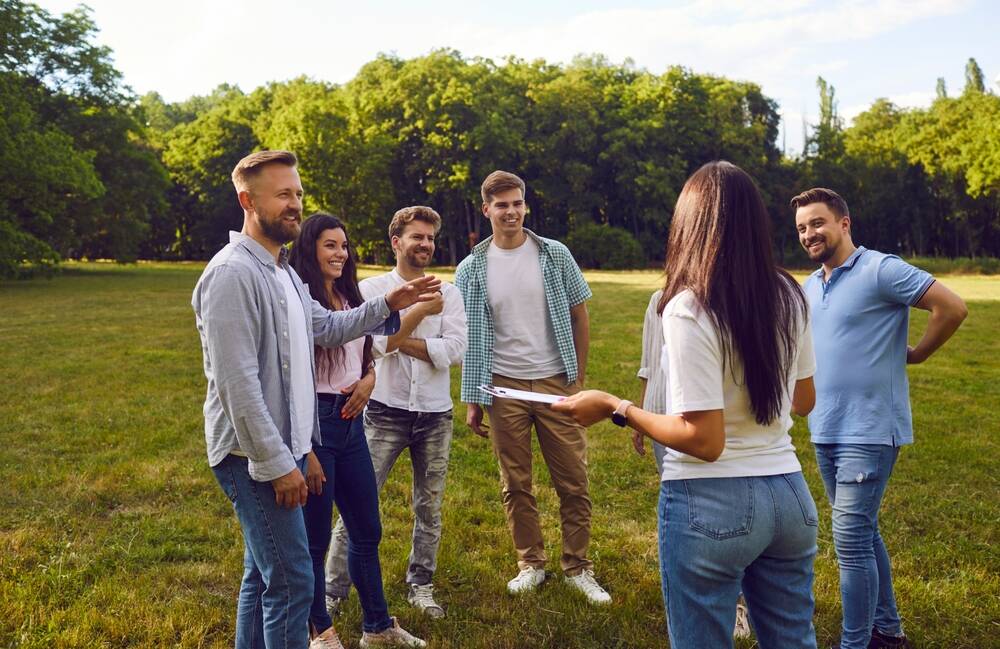Beyond basics: Seven creative ideas for next-level conference experiences

This is branded content.
Poorly organised conferences or work events can easily drain the energy from attendees and promote an environment where motivation is lacking, and boredom is high.
On the flip side, creative experiences will generate interest, increase engagement, and give attendees a reason to return year after year.
It is therefore very important to dedicate time and effort to planning a work conference.
From big-ticket items like selecting the venue and hiring the keynote speaker, right down to selecting gift bag products or finding ethically sourced, eco-friendly lanyards in Australia, every detail can play an important part in the success of the event.
To help you organise your next work event, we have pulled together seven creative ideas for next-level conference experiences.
1. Select a theme for the conference
Choosing a theme for a conference can help tie together all the different elements and create a cohesive experience for attendees.
The theme may align with the company or business itself. For example, a 'construction theme' for a building company.
The location may then come into play such as a 'beach party' theme for a conference hosted in Fiji. Or it may be something a little off the beaten track - try a 'carnival' theme or an 'academy awards' theme for a little more fun.
Take the time to consider what the purpose of the conference is to help build out a theme that will be relevant.
Still struggling for ideas? Try some of these top conference theme ideas.
2. Choose engaging icebreaker activities
Ice-breaker activities are an important part of conference events, but they can be a real hit or miss.
It is very important to get energy levels up before diving into more heavy content, and they can also be used to help break up the day.
As a general rule, don't put people on the spot or ask them to talk about failures or problems during an icebreaker.
Asking attendees to present or speak to a large group of people could also transition the icebreaker from a fun activity to a much more stressful public speaking exercise for some.
Some fun, engaging ice-breaker activities might be:
Icebreaker polls
One of the simplest ways to capture people's attention without igniting fear in their hearts is to create an icebreaker poll.
Polls are especially handy when attempting to engage a large crowd at once, and applications like Slido have a live-polling feature that attendees can access via their smartphones.
Live polls can relate to the business itself or can simply be fun questions the crowd can engage with.
Paper plane race
Another great icebreaker is a paper plane race.
Divide attendees into smaller teams and provide each team with four sheets of paper and a time limit of 20 minutes.
Teams must work together to design the perfect paper plane, with up to three prototypes and the final design. Have the teams come back together and the team whose plane flies the furthest wins.
The paper plane race requires team members to collaborate on a project with a single outcome. It establishes the effectiveness of trial and error, and it also gets attendees up and moving.
3. Make sessions interactive
For some, there is nothing more draining than listening to a person speak for hours on end. By making sessions more interactive, it is more likely to capture and maintain the attention of the audience.
Simple shifts in stock-standard conference staples can make all the difference. These include:
- Turn your keynote speaker into an informal interview or a 'fireside chat' and have a Q and A tool available to attendees to pose their own questions.
- Invite two experts to participate in a debate on a polarising topic. Run a poll to attendees before and after the debate to measure if opinions shift, as well as to determine who the winner of the debate is.
- Utilise a "lightning talk" or a short-form presentation that lasts only a few minutes each. Lightning talks may be delivered by different speakers in a single session, and provide a quick overview of a topic, product or issue.
- Two popular storytelling formats come from Pecha Kucha (where the presenter has 20 slides with 20 seconds to comment on each slide) and Ignite Talks (where each presenter has five minutes to talk on a subject, accompanied by 20 slides, followed by a Q and A).

4. Head outdoors
This is a simple but effective one. Where possible, take the time to head outdoors.
Just a few minutes in the sun and fresh air can help people reset, jump-start their creativity and reestablish wavering attention.
Encourage break-out sessions to be held outdoors or facilitate breaks by offering food and beverages in an outdoor location.
5. Change up rooms or room layouts
This is particularly important for conferences that span several days.
Changing up the learning spaces is important to prevent attendees from becoming uninspired and 'bored' from being in the same general area consistently over a long period.
Switch between an auditorium set-up, banquet tables, a U-shaped table, or even classroom-style with a table for each attendee depending on the requirements of each session.
6. Make your food and drink offerings good
When a conference comes to an end, there are three big things that are always discussed by attendees: the content, the venue, and the food and drinks.
Food and drink play a very important role in a conference - a well-fed individual is going to be able to concentrate, and it helps create a welcoming environment for all.
Some food and drink offerings that can take your event to the next level could include:
- A well-stocked gourmet coffee bar with a barista that will meet the needs of many attendees. Include tea and hot chocolate options for those who are not coffee drinkers.
- Hydration stations in convenient locations will help keep attendees hydrated. Add water dispensers filled with mint leaves, cucumber slices or fresh fruit for a little bit of luxury.
- Theme-based foods can help add a touch of culture and fun to any event. If you're conferencing in sunny Queensland, why not try an ice cream bar? If you're in funky Adelaide, consider a wine-tasting experience.
7. End your conference with a bang
Often a conference will end with a summary of the key themes and ideas, tying everything attendees have partaken in over the conference into a neat package.
And then - it's just done.
For a more impactful end to a conference, hosting a happy hour or after-party can be a more exciting way to finish up a few potentially gruelling days of work.
An informal social gathering is often welcomed after multiple days of heavy content sharing.
It also gives attendees the chance to connect, share information, and talk about highlights of the conference in an informal environment.


